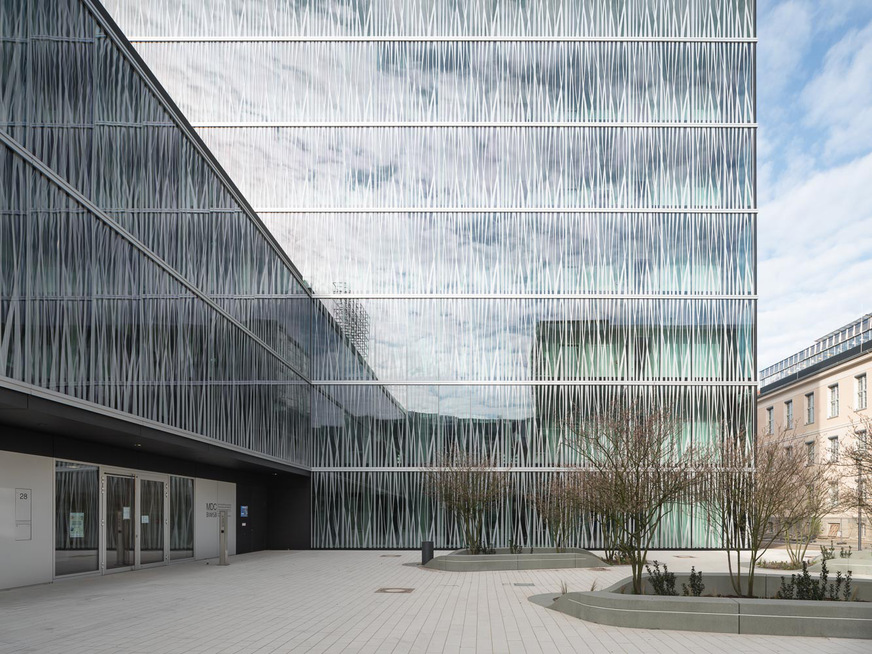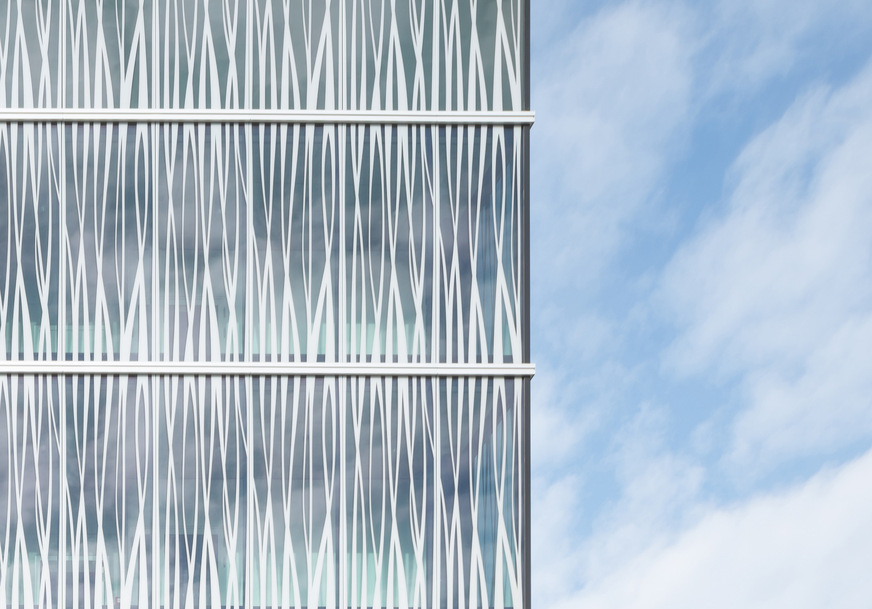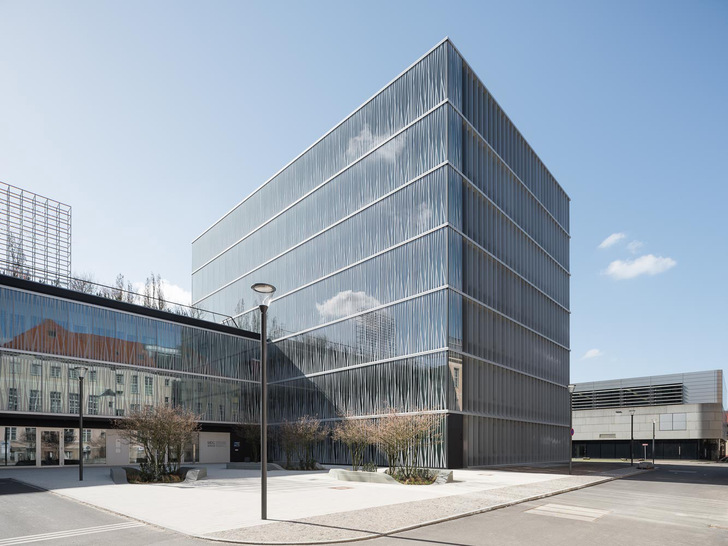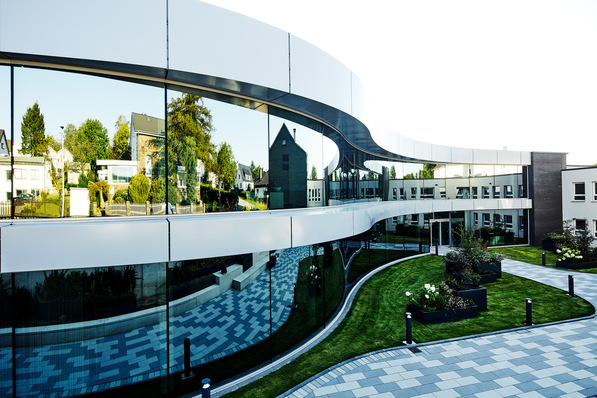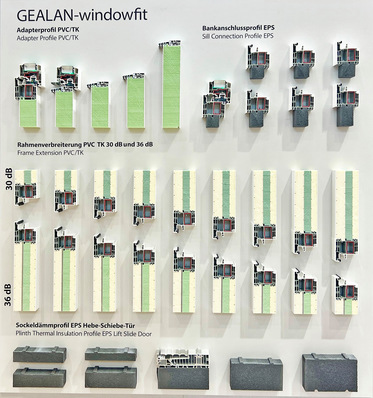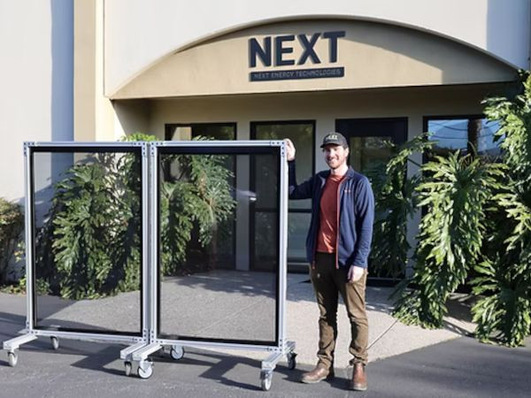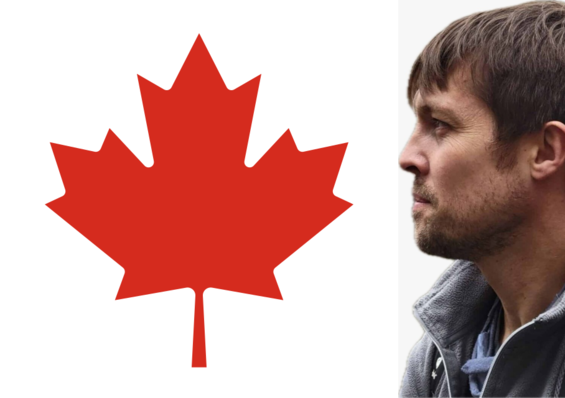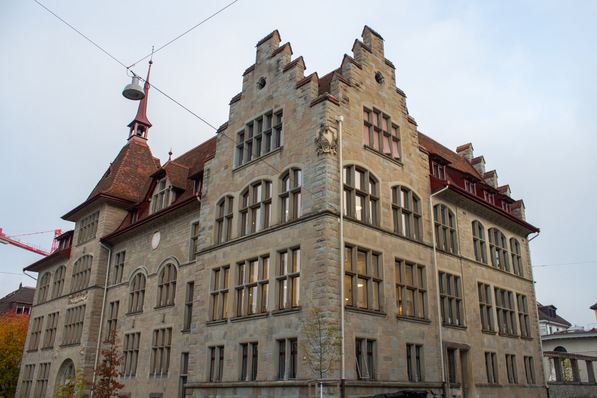The new building for the MDC Berlin Institute for Medical Systems Biology (BIMS) was designed by Staab Architekten, Berlin, offers the young science of systems biology optimum spatial and contextual networking opportunities. It opens out onto the forecourt with a generously proportioned printed glazed façade and provides a glimpse into life at the institute.
As well as its decorative function, the striking print design by Flachglas Wernberg is an added key component of the sun protection system. To keep the overshadowing of the surrounding buildings and the open spaces to a minimum, the building wings were designed in varying heights.
The newbuild features flexible architectural structures, so as to allow researchers from a variety of disciplines to work together in an optimal manner. Communication is central to goings on in the building and that is something which is visible from the outside too.
A wide corridor by the façades facing onto the forecourt serves as the main access and provides a direct link between the building wings and the central staircase. The wide access corridors allowed us to develop an ultra-transparent façade here, providing a glimpse into everyday institute life.
And, inside, the stair hall connecting all floors next to the entrance serves as a communicative centre. Glazed conference and recreation rooms are attached to the hall, with open-plan work zones separated from the labs by glass walls.
Design print on glazing reduces energy transmittance
To give the innovative working world of the interior a fitting outward appearance, material and details have been selected to lend the façade a technoid and precision look and feel. The predominant element of the façade are horizontal metal bands which are attached in front of the floor slabs right around the building. These bands link the designs of both façades, i.e. the glazed façade and the façade of the office area which is clearly segregated with deep slats.
The main focus of the transparent façade is an organic looking print design on the storey-length glass panes. It refers to the institute’s field of research on the one hand and offers a contrast to the orthogonal cubature of the building on the other.
The motifs on the 1.30 × 3.96m white heat soaked single-pane safety glass panes were digitally printed at Flachglas Wernberg using GlassJet technology. With this printing method the glass surface is printed directly using ceramic paint. This method ensures the precision positioning of the paint droplets. Flachglas Wernberg created around 30 different motifs for a wide range of glass structures.
In the viewing areas of the façade the print design (RAL 7044 silk-grey) is narrower, ensuring an unobstructed view outward. The repeating of the pattern on all sides calms the view of façade.
With a 35% degree of printing the motif is an effective supplement to the sun protection system. Used in combination with 3x sun protection glass, alternating depending on façade orientation, the overall energy transmittance was able to be reduced at least by another 10%.
In the northern façade the overall energy transmittance of the sun protection glass selected was therefore reduced from 37 % to 25 %, in the eastern and southern façade it was reduced from 29% to 19% thanks to the printing. This meant that the architects were able to completely forgo any external sun protection features when planning the glazed façade, without neglecting adequate light transmission.
The style of printing interrupts the reflection on the glass and therefore minimises the risk of birds flying into the façade. To enhance the surface effect of the glass façade, the printed glass panes are only held by cover strips at the horizontal edges and attached at the vertical joints as rabbet edges.
The use of glass and metal surfaces gives the new building its transparent character and counters the spatial proximity, fitting in perfectly in the given context. —
www.flachglas.de
